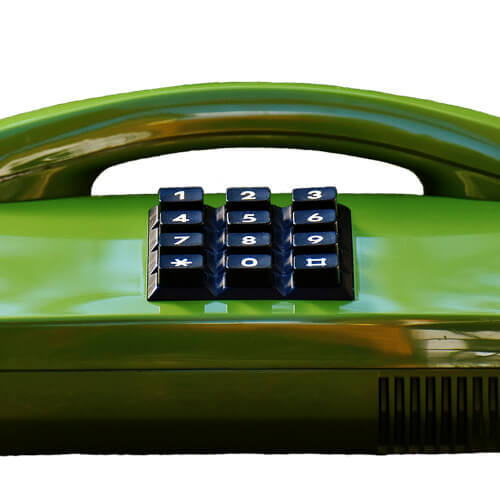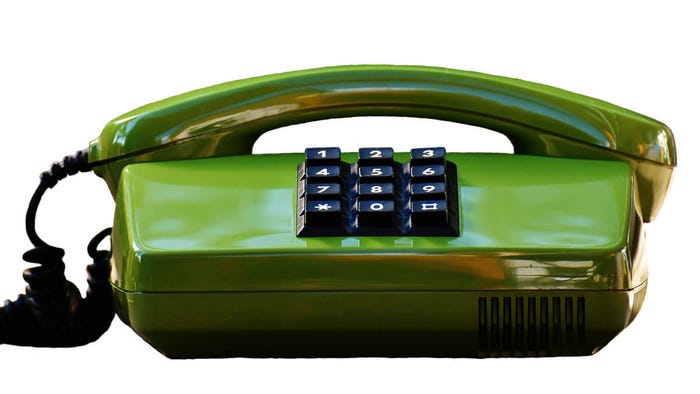With customers' keenness to be green posing risks for smartphones, 24 operators and manufacturers form an environmental rating scheme. Apple's absent.

Customers are increasingly keen to be green. And so, five of Europe's biggest mobile operators are joining together to launch a new Eco Rating labelling scheme.
Deutsche Telekom, Orange, Telefónica, Telia Company and Vodafone are cooperating in the rating project, which begins in June.
Figure 1:  Any color as long as it's green: Growing consumer demand has pushed operators to be clear about how green their phones are.
Any color as long as it's green: Growing consumer demand has pushed operators to be clear about how green their phones are.
(Source: Hier und jetzt endet leider meine Reise auf Pixabay aber from Pixabay)
The scheme will involve 24 manufacturers and operators altogether, including Samsung, Xiaomi, ZTE and Huawei outside Europe. This list is probably most interesting for who isn't there.
Apple is the most conspicuous absentee, so iPhones won't carry these handy environmental scores. But for the other mobile devices, customers at the point of purchase will see devices given an overall Eco rating between 0 and 100. These ratings will initially be rolled out in 24 countries across Europe, including the UK and Turkey.
The CEOs of the five large European mobile operators said, in a reasonably rare joint statement, they "look forward to welcoming more manufacturers and telecoms operators to the Eco Rating initiative in the future."
"We hope it will inspire the whole industry to accelerate its transition towards a more circular model for mobile phones," the bosses added.
Scores on the doors
These ratings will "create a race to the top," hoped Sara Nordbrand, Telia's head of sustainability, writing on Twitter. The Eco Rating will have breakout scores, too, on durability, repairability, recyclability, climate efficiency and resource efficiency.
Durability will measure the device's robustness, just how poor or otherwise its battery life is and the guarantee period for the device and its components.
Repairability will grade how easily it can be repaired or upgraded, rather than tossed in the bin.
Recyclability, by contrast, looks at how easily components can be disassembled and the materials recycled, rather than (again) tossing the whole thing in the bin.
Climate efficiency scores up the device's greenhouse gas emissions, during its whole lifecycle.
The last measure, resource efficiency, scores the device's impact on depleting scarce raw materials, like gold.
The methodology, created by IHOBE, a publicly owned company based in the Basque region, measures 19 criteria to compile the scores.
The agency says it has drawn on the Telecommunication Standardization Sector, as well as the latest standards from the EU, the ITU and the International Organization for Standardization (ISO).
Not, generally, a green machine
Mobile operators don't generally all agree with each other, but here (besides Apple) they're coming independently to the same conclusion.
Namely, with Millennial customers especially caring lots more about their green footprints, the smartphone industry's impact on the environment is a big risk to their bottom line. Smartphones are the tech industry's most environmentally damaging devices by a long way, say researchers at Canada's McMaster University.
Want to know more about 5G? Check out our dedicated 5G content channel here on
Light Reading.
Chip sets and motherboards are made up of precious metals, extracted at a high cost to the environment.
They also have extremely short shelf lives. After just two years, they may end up in landfill, while their owner moves on to another device. They consume very little energy – so 85% of their lifetime emissions comes during production.
Meanwhile a Nielsen study of 1,000 US customers says about half of them were likely to change what they buy to be better for the environment. And 88% said they would buy a product with a social or environmental benefit if given the opportunity.
In other words, there's green to be made out of being green.
Related posts:
— Pádraig Belton, contributing editor special to Light Reading
Read more about:
EuropeAbout the Author(s)
You May Also Like











